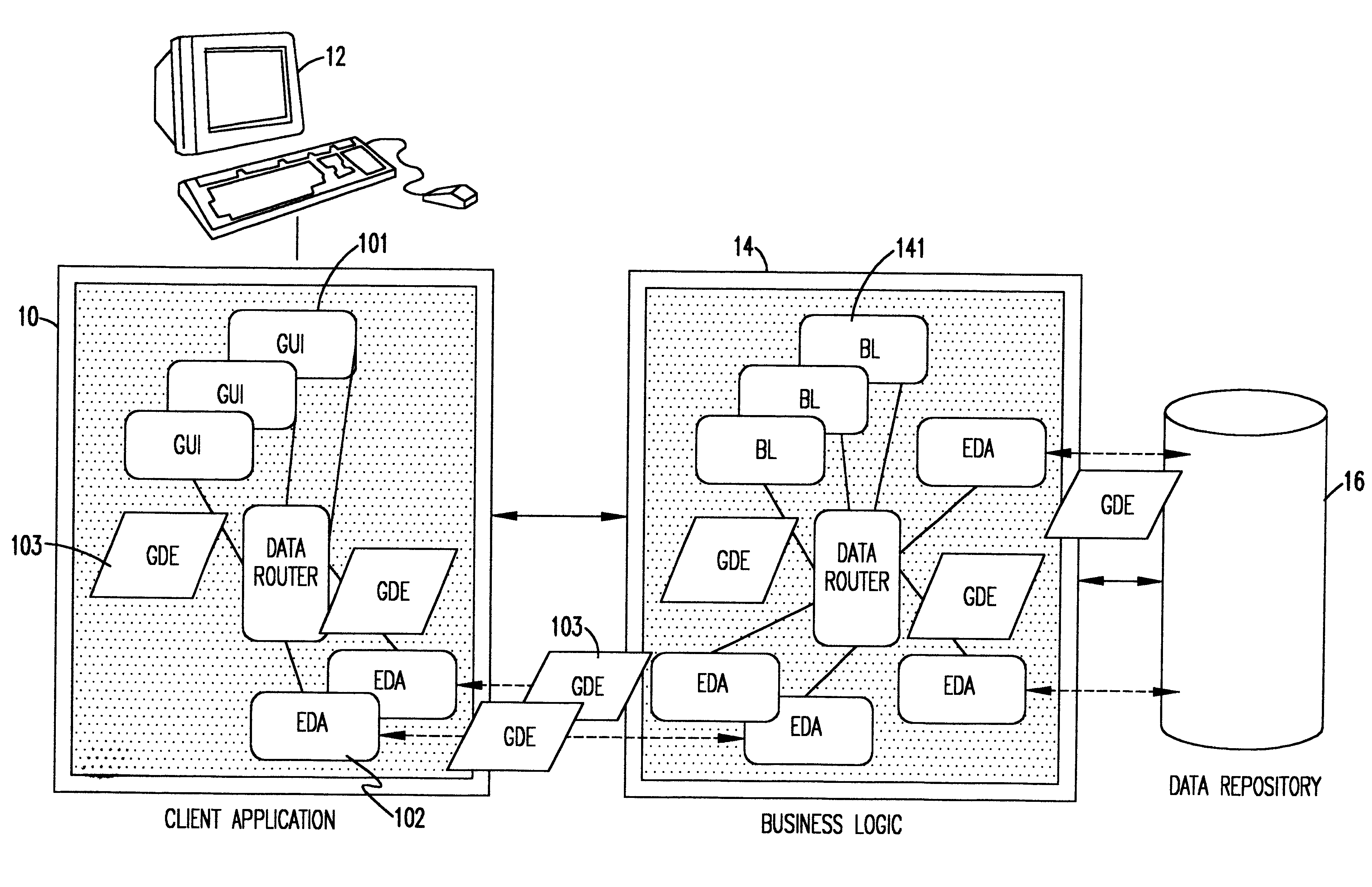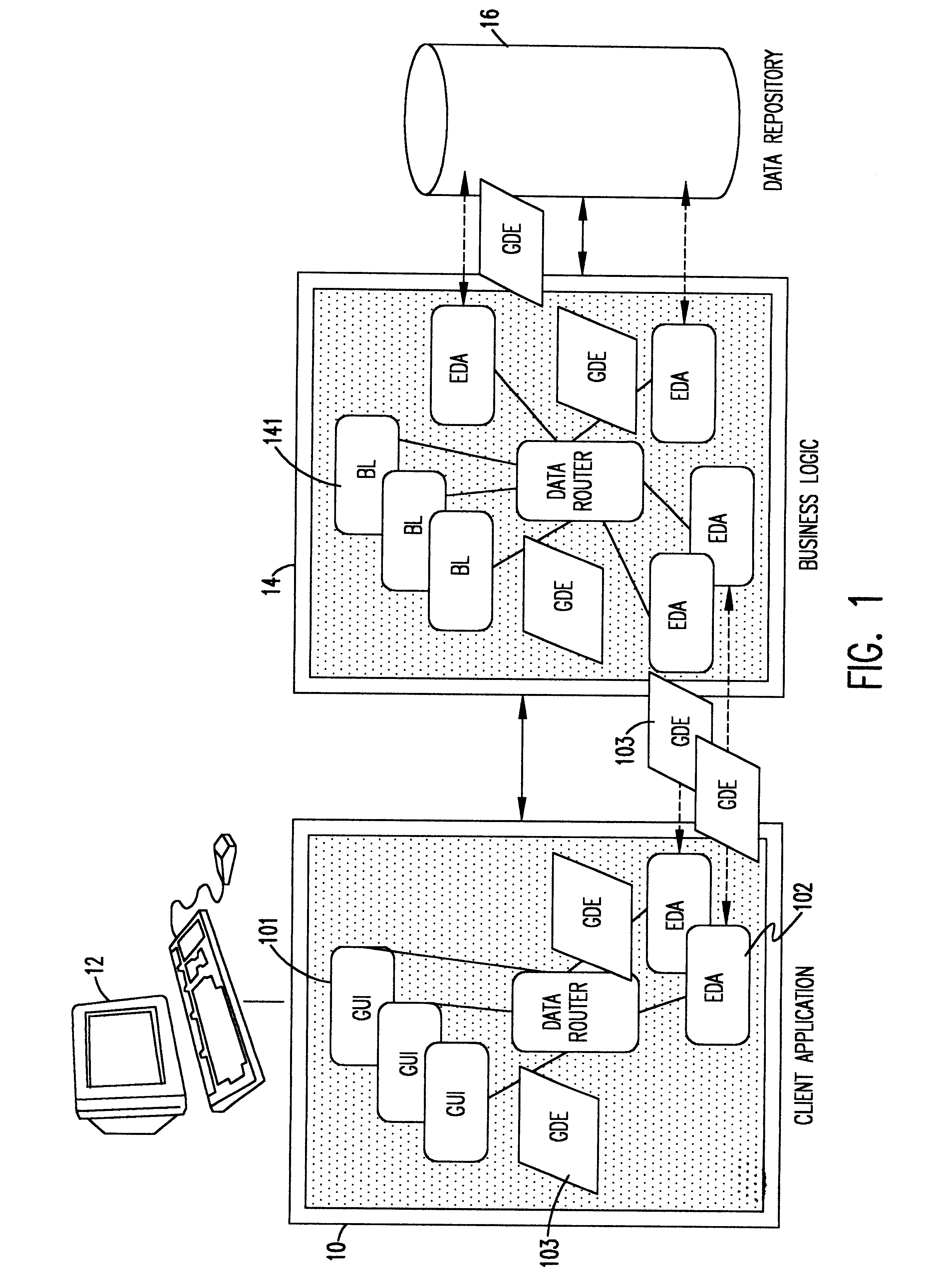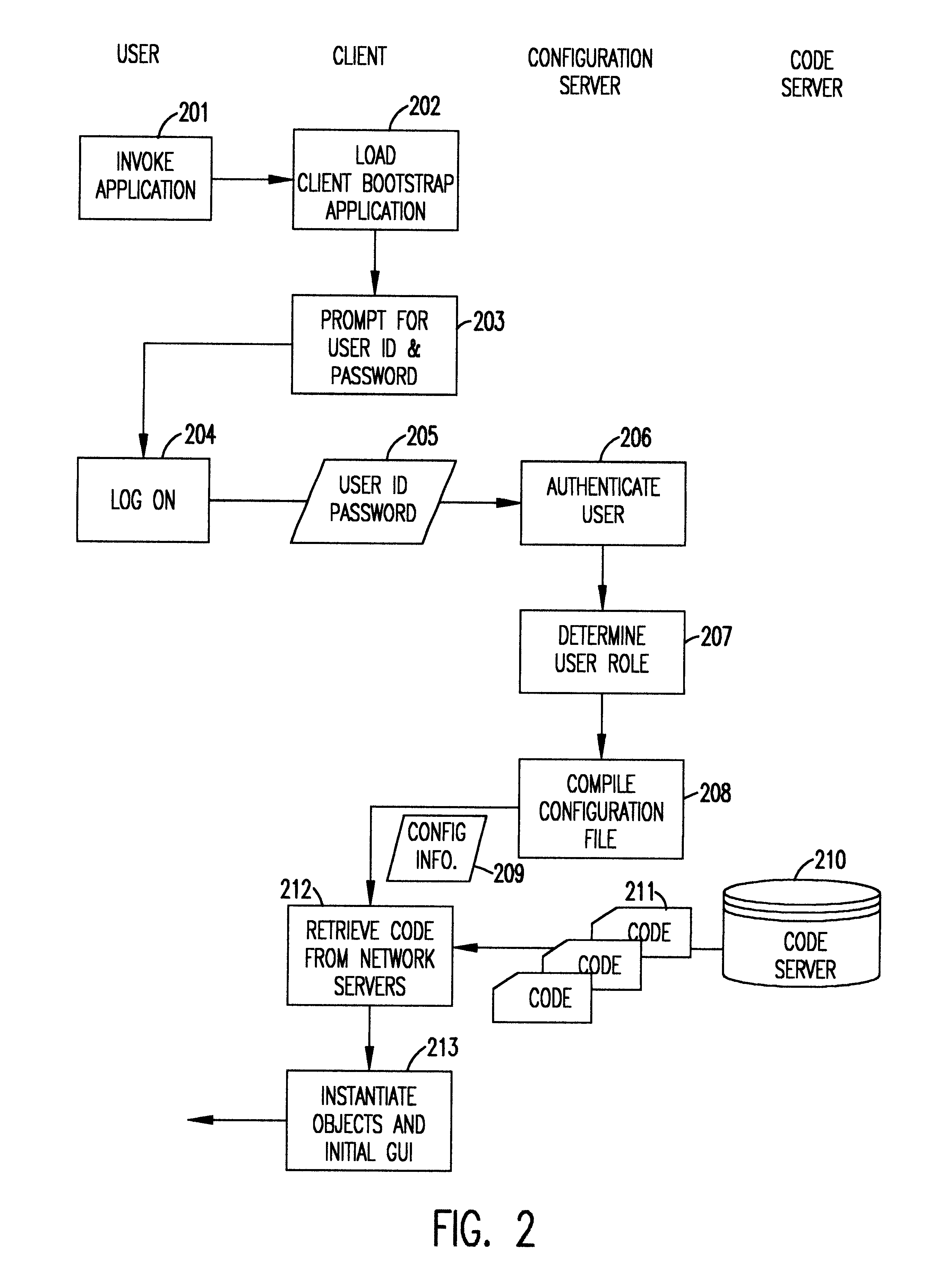Distributed application assembly
a technology of application assembly and distributed application, applied in the field of enterprise database management, can solve the problems of not sharing a common user, doubling effort, and inability to meet enterprise-wide data processing needs in the field of customer relationship managemen
- Summary
- Abstract
- Description
- Claims
- Application Information
AI Technical Summary
Benefits of technology
Problems solved by technology
Method used
Image
Examples
example implementation
Here we describe an example implementation of the invention. In the example implementation, the user invokes a bootstrap Java.TM. application on their machine. When the application appears, it really contains no functionality other than to allow the user to login and retrieve the configuration information necessary tailor the application to the individual user. The flow of this process is illustrated in FIG. 2, to which reference is now made. In function block 201, the user invokes the Java.TM. application. The client bootstrap application is loaded in function block 202. An application shell such as the one shown FIG. 4 appears prompting the user to enter his or her User ID and Password in function block 203. Other authentication methods could also be used, such as a smart card and biometric identification (e.g., finger print, voice, etc.), for example. The user then performs a login which consists of entering the prompted authentication information 204 (User ID / Password) into the ...
example flow
Let us look at a flow for the example we discussed above. Suppose the user wanted to locate a customer name Gary Anderson and the user knew the postal code, but not the customer number. They might type in the last name in the "Locator" panel, shown in FIG. 7, and display a list of all of the Andersons in the "Client List" panel, as shown in FIG. 8.
The mechanism for this is as follows. When the user enters a name in the "Locator panel", a DataCapsule 301 is created and sent to the DataRouter 303. This DataCapsule will have a domain of"DAA_DEMO" and a category of "DAA_DEMO_PARTY_LIST_REOUEST". Since the PartyListProvider has registered with the DataRouter 303 as being interested in this category of message, the PartyListProvider then converts the DataCapsule 301 into XML and passes it to a process running on an enterprise server (possibly a Servlet or EJB (Enterprise Java Bean) running on a Web or Application server). That process reads the XML message and interacts with the enterpris...
PUM
 Login to View More
Login to View More Abstract
Description
Claims
Application Information
 Login to View More
Login to View More - R&D
- Intellectual Property
- Life Sciences
- Materials
- Tech Scout
- Unparalleled Data Quality
- Higher Quality Content
- 60% Fewer Hallucinations
Browse by: Latest US Patents, China's latest patents, Technical Efficacy Thesaurus, Application Domain, Technology Topic, Popular Technical Reports.
© 2025 PatSnap. All rights reserved.Legal|Privacy policy|Modern Slavery Act Transparency Statement|Sitemap|About US| Contact US: help@patsnap.com



